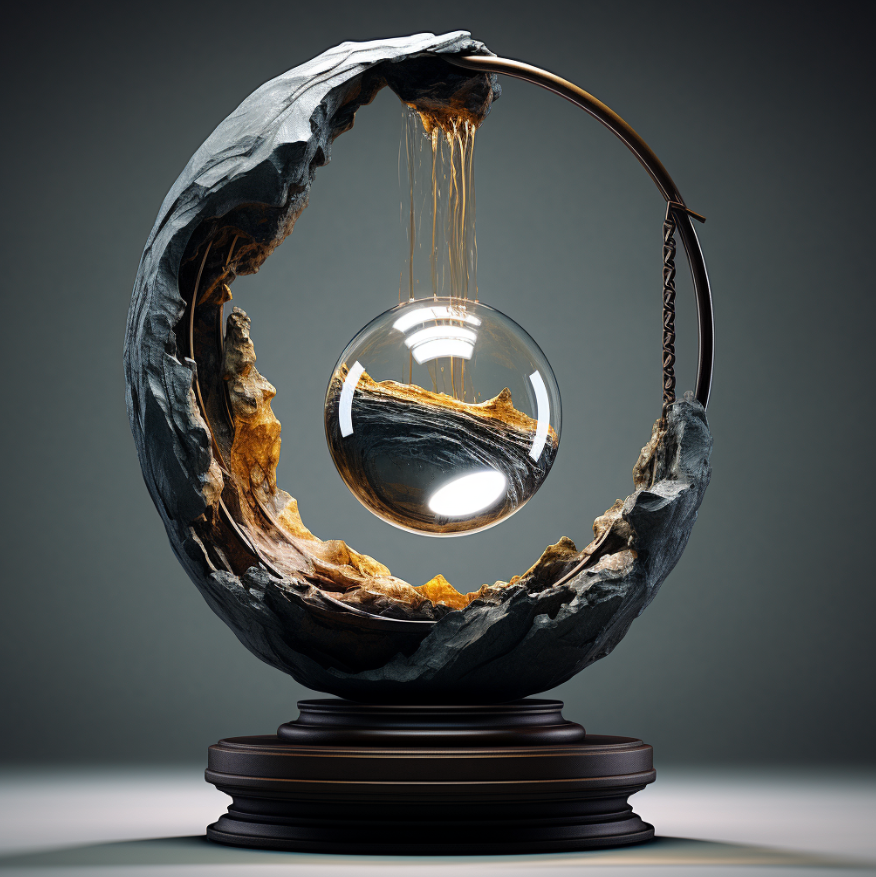Roses and the Alchemical Quest: Unfolding the Petals of Transformation and Divine Wisdom
Posted on February 14, 2024 • 4 minutes • 832 words
Table of contents
In the ancient, dimly lit chambers of their sacred spaces, where the pursuit of wisdom merged with the mystical, alchemists found in the rose a symbol of the universe’s hidden truths. This was no ordinary flower but a beacon of perfection, a guide through the mysteries of existence and the alchemical journey toward enlightenment. The rose, with its spiraling petals unfolding into infinity, was not merely to be observed but deeply contemplated, as within its form lay the secrets of the cosmos, mirroring the alchemical process of turning the leaden aspects of the soul into spiritual gold.
The alchemists' reverence for the rose transcended its earthly beauty, seeing in its intricate design and fragrance a microcosm of the divine. It represented the Philosophical Stone itself, not just as a physical object but as a metaphysical concept embodying purity, enlightenment, and the ultimate transmutation . The rose whispered of the possibility to transcend mortality, to uncover the elixir of life , and to achieve a state of perfection and unity with the divine, echoing the alchemists' highest aspirations.
| Phylosophical stone, artistic representation |
|---|
 |
The journey toward these lofty goals was fraught with challenges and mysteries, as the path of alchemy was as complex and layered as the rose itself. Each petal could symbolize a stage in the alchemist’s work, from calcination’s fiery destruction to the gentle distillation, leading to the rebirth and renewal of substances and the soul alike. The rose taught that true transformation required patience, understanding, and a deep reverence for the natural world’s intricate beauty and wisdom.
In their laboratories, surrounded by alembics and flasks, alchemists meditated on the essence of roses, drawing parallels between the flower’s life cycle and their own spiritual rebirth. They believed that just as a rose grows from the earth, reaching toward the heavens, so too could the human spirit ascend from its base condition to a state of divine grace. This belief fueled their experiments, their writings, and their art, imbuing their quest with a sense of sacred purpose.
| Elixir of life, artistic representation |
|---|
 |
Thus, the rose became an emblem of the alchemical endeavor, a reminder that within the heart of nature lies the blueprint for our own transformation. It encouraged a holistic view of the quest for knowledge, where science, spirituality, and the beauty of the natural world were intertwined. The alchemists' fascination with the rose reminds us that our search for meaning and transformation is as perennial as the flower itself, urging us to look beyond the surface to the profound truths that bind the universe together.
Let us, then, draw inspiration from the rose and the alchemists' journey, recognizing in their shared quest a universal longing for transformation, enlightenment, and a deeper connection with the mysteries of existence. As we contemplate the beauty of a rose, may we also see the potential for change within ourselves and the world around us, guided by the timeless dance of nature and the enduring quest for knowledge.
References
For those interested in delving deeper into the history of alchemy and the history of arts, here are some reference books and sources that offer comprehensive insights into these fascinating subjects:
History of Alchemy
- “The Forge and the Crucible: The Origins and Structures of Alchemy” by Mircea Eliade - A classic study on the origins and significance of alchemy, exploring its practices and philosophical underpinnings across different cultures.
- “Alchemy: An Introduction to the Symbolism and the Psychology” by Marie-Louise von Franz - Offers an in-depth look at the symbolic and psychological aspects of alchemy, interpreting its rich traditions and influences on modern psychology.
- “The Alchemist’s Handbook” by John Randolph Price - A guide to the basic principles of alchemy, providing insight into the processes and spiritual symbolism behind the alchemical work.
- “The Secrets of Alchemy” by Lawrence M. Principe - This book demystifies the historical and scientific truths about alchemy, separating myth from reality and exploring its development through history.
History of Arts
- “The Story of Art” by E.H. Gombrich - A highly regarded overview of the history of art, from the earliest cave paintings to modern times, written in an accessible manner for readers of all backgrounds.
- “Art Through the Ages” by Helen Gardner - A comprehensive survey of the visual arts from around the world, spanning from ancient times to the contemporary era.
- “The Lives of the Artists” by Giorgio Vasari - An early work of art history written in the 16th century, providing biographies of Italian Renaissance artists and insights into their works and techniques.
- “Ways of Seeing” by John Berger - A seminal text on understanding and interpreting art, offering perspectives on how we perceive visual images and their impact on society.
These books provide a mix of theoretical insight, historical context, and practical understanding, catering to a wide range of interests within the realms of alchemy and art history. Whether you’re a student, a practitioner, or simply a curious reader, these references will deepen your understanding of these rich and complex fields.
Share
Tags
Counters

